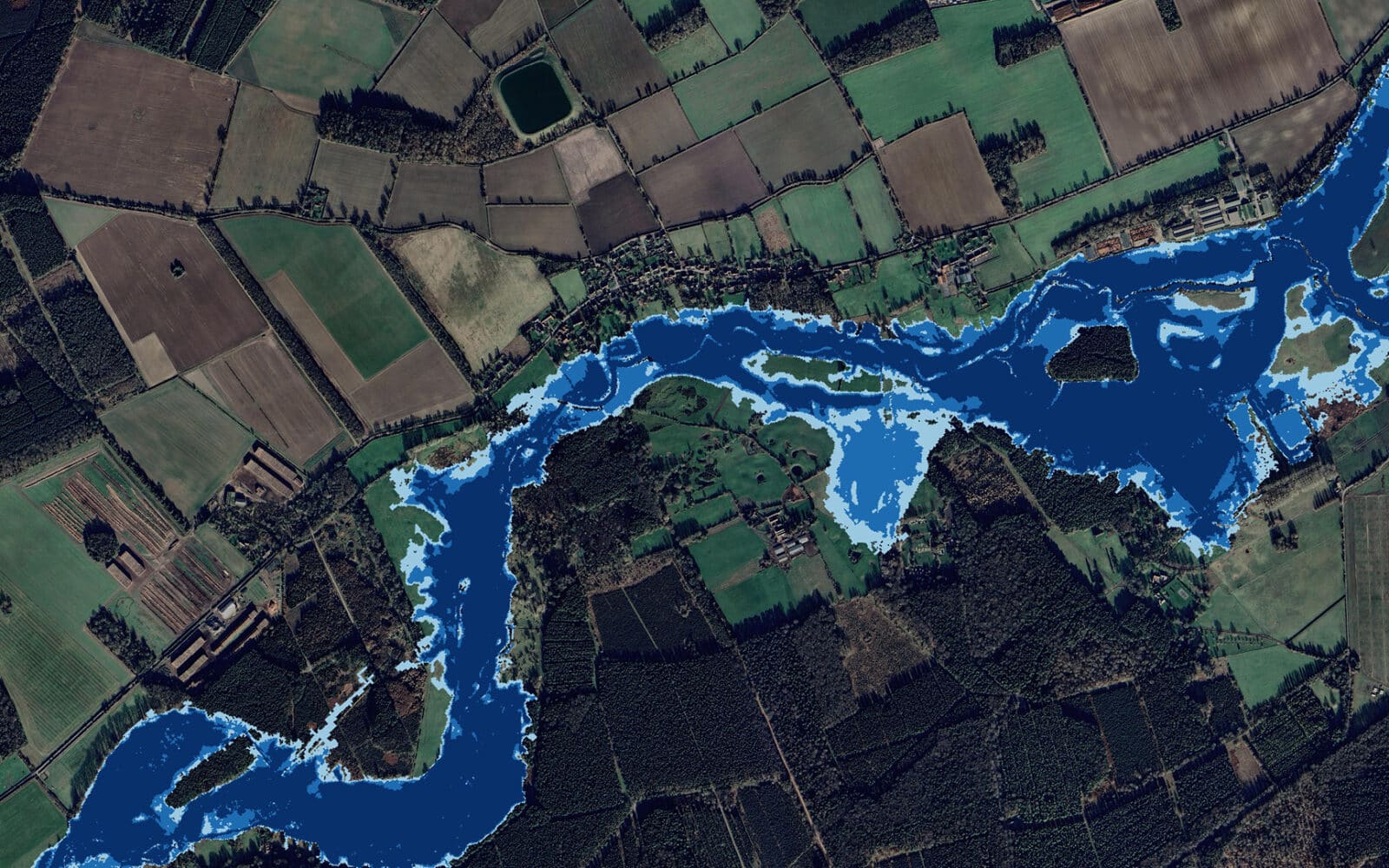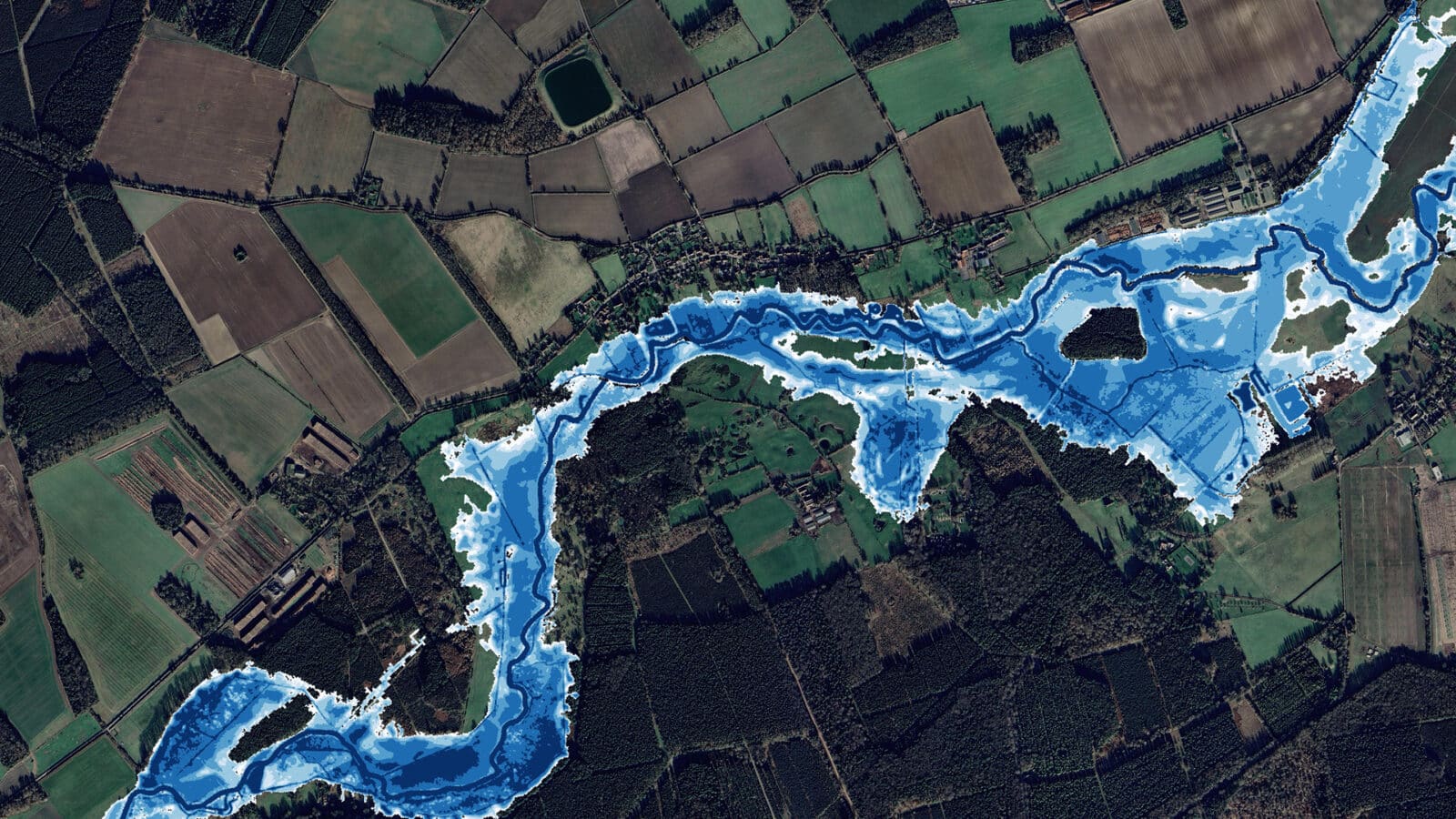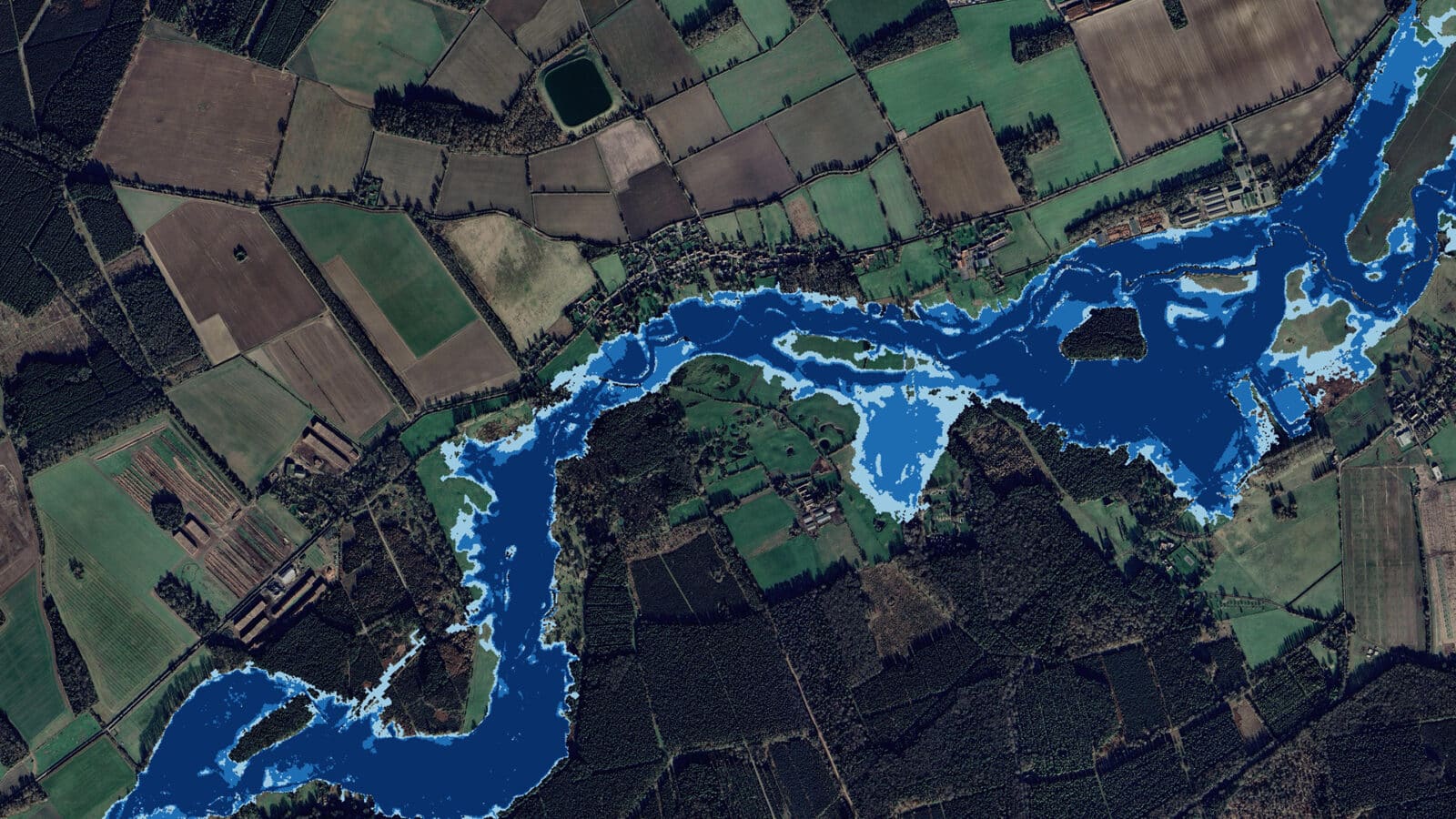PROJECT DESCRIPTION
The Thet and Little Ouse Natural Flood Management (NFM) project is part of a wider initiative to renaturalise the Breckland landscape, enhancing ecological diversity and mitigating flood risk. The project focuses on stretches of the River Thet and River Little Ouse upstream of Thetford, aiming to introduce NFM measures that improve floodplain connectivity, channel form, and in-channel flow regimes.
Create was appointed by Norfolk Rivers Trust to bring existing Environment Agency (EA) hydraulic models up to industry standard, test proposed interventions for flood risk impact, and provide iterative feedback to the design team. A successful outcome required improved floodplain storage, better ecological conditions, and verified off site flood risk benefits.
Our team also carried out GIS-based analysis to identify optimal intervention locations, reviewed LiDAR data, and assessed historical land use to support decisions. Interventions included large woody debris installation, bank top lowering, ditch blocking, and “stage zero” river realignment.
WHAT WE DID:
PLANNING STAGE:
- Hydraulic Modelling Review
Reviewed and updated three EA models with industry-standard hydrological inputs, land use, and topographic data to re-establish a reliable baseline for testing interventions.
- Natural Flood Management Strategy
Evaluated and modelled proposed NFM measures to quantify offsite flood impacts while enhancing floodplain function and ecological value.
- GIS and Spatial Analysis
Undertook detailed LiDAR and catchment analysis to inform intervention placement and floodplain reconnection opportunities.
DESIGN STAGE:
- Low Flow Analysis
Performed Q5, Q50, and Q95 low-flow inundation modelling to support ecological design, planting strategies, and habitat restoration.
- Intervention Impact Testing
Modelled individual and cumulative impacts of each NFM site under various design storm event conditions to test performance, identify unintended consequences, and feed into design improvements.
- Ecological Integration
Assessed flow regime benefits for chalk river habitats to ensure long-term improvements in channel condition and biodiversity.
LIVE ENVIRONMENT:
- Catchment-Based Approach
Supported a landscape-scale intervention strategy tailored to catchment hydrology and ecological priorities.
- Stakeholder Engagement
Enabled informed decision-making through transparent modelling outputs and collaborative review with project partners.
KEY ACHIEVEMENTS / BENEFITS:
-
Evidence-Based Flood Risk Assessment
Delivered robust flood modelling evidence to support nine site-specific Natural Flood Management (NFM) interventions.
-
Integrated Design for Resilience and Biodiversity
Enabled NFM designs that reduce flood risk, enhance drought resilience, and deliver ecological improvements to chalk river habitats.
-
Catchment-Wide Impact Analysis
Demonstrated the cumulative benefits of a catchment-scale intervention strategy through iterative testing and refinement.
-
Promotion of Sustainable Land Use
Supported sustainable land use practices and ecological restoration within a nationally significant chalk river landscape.




